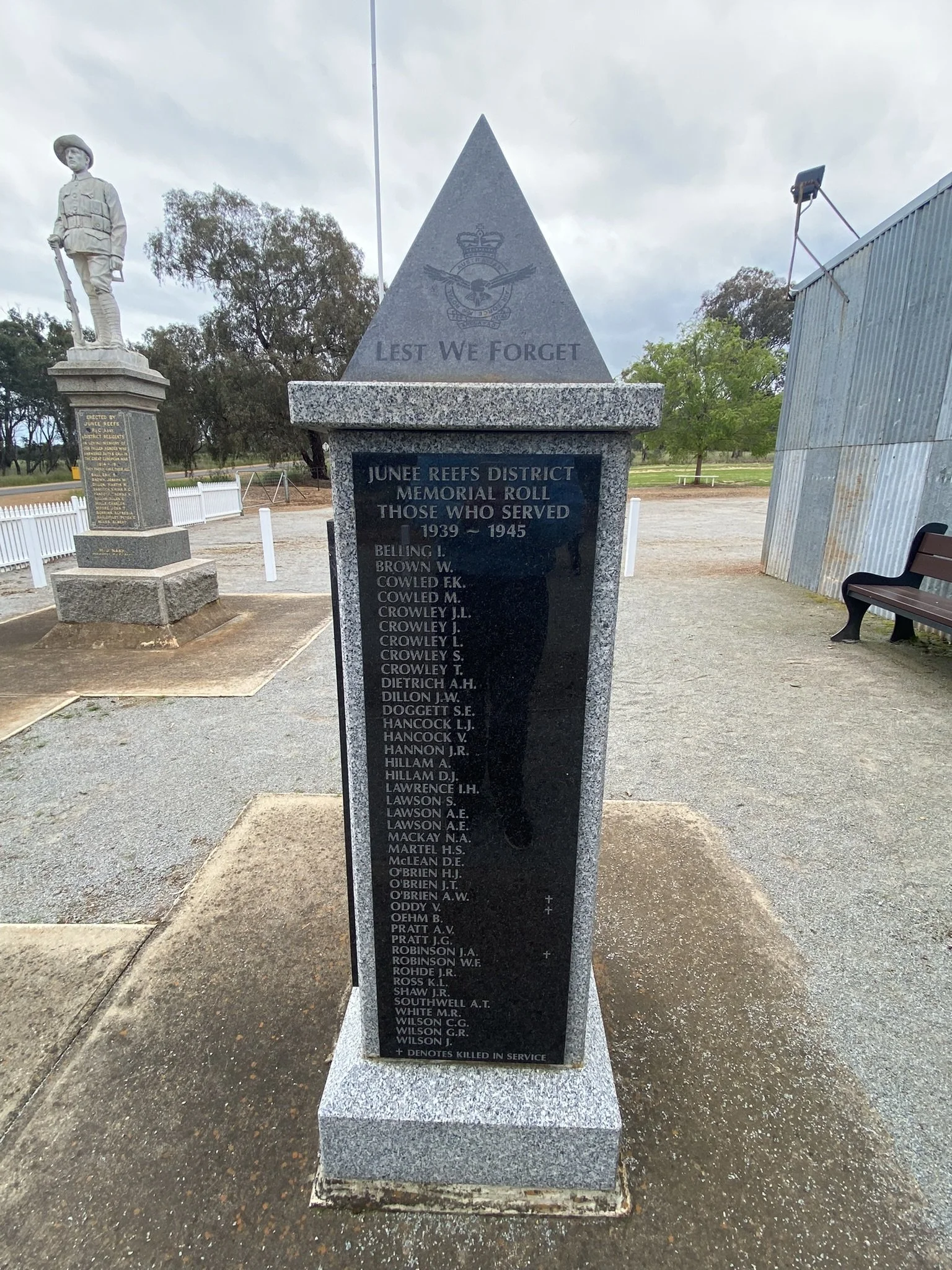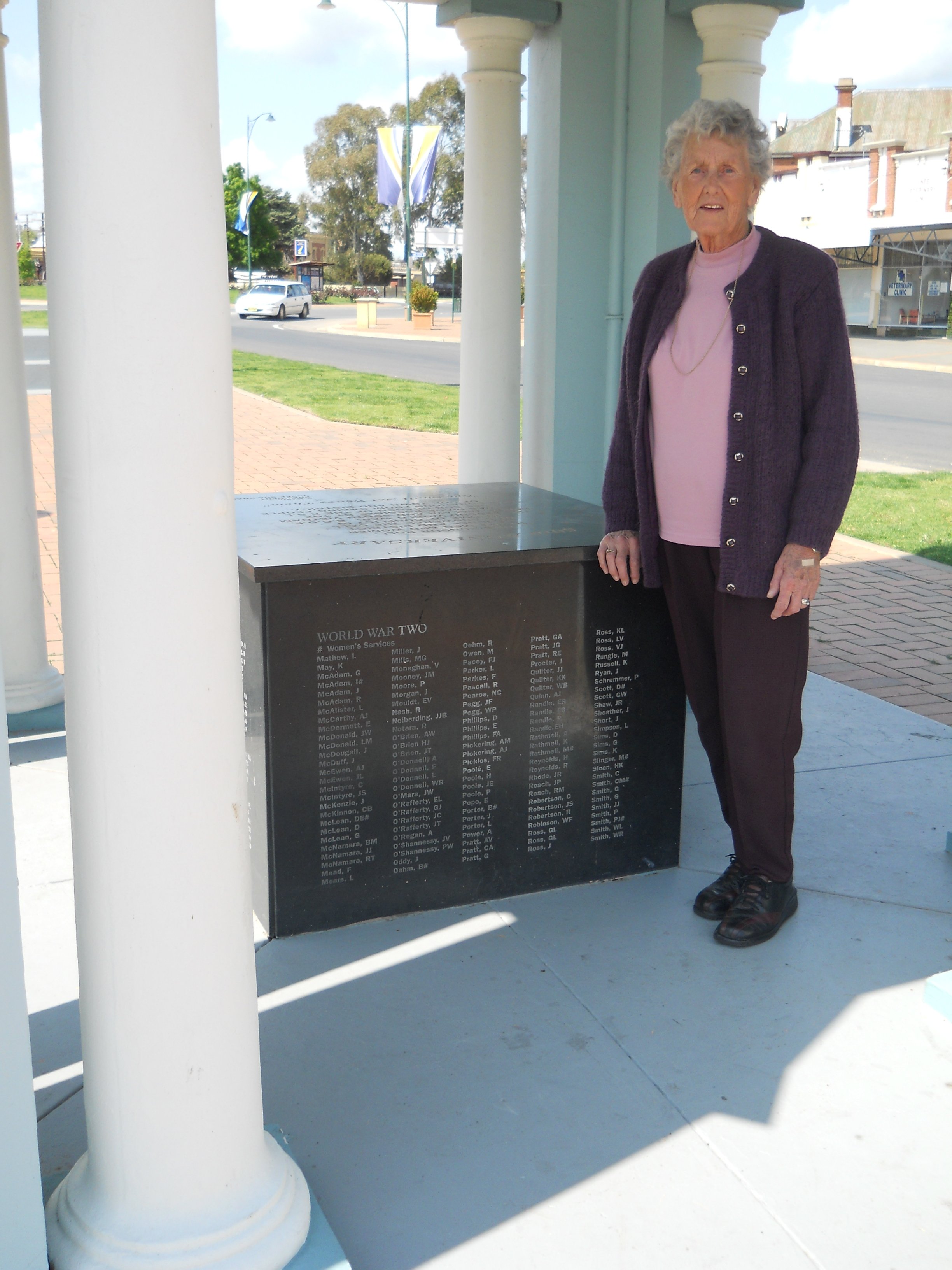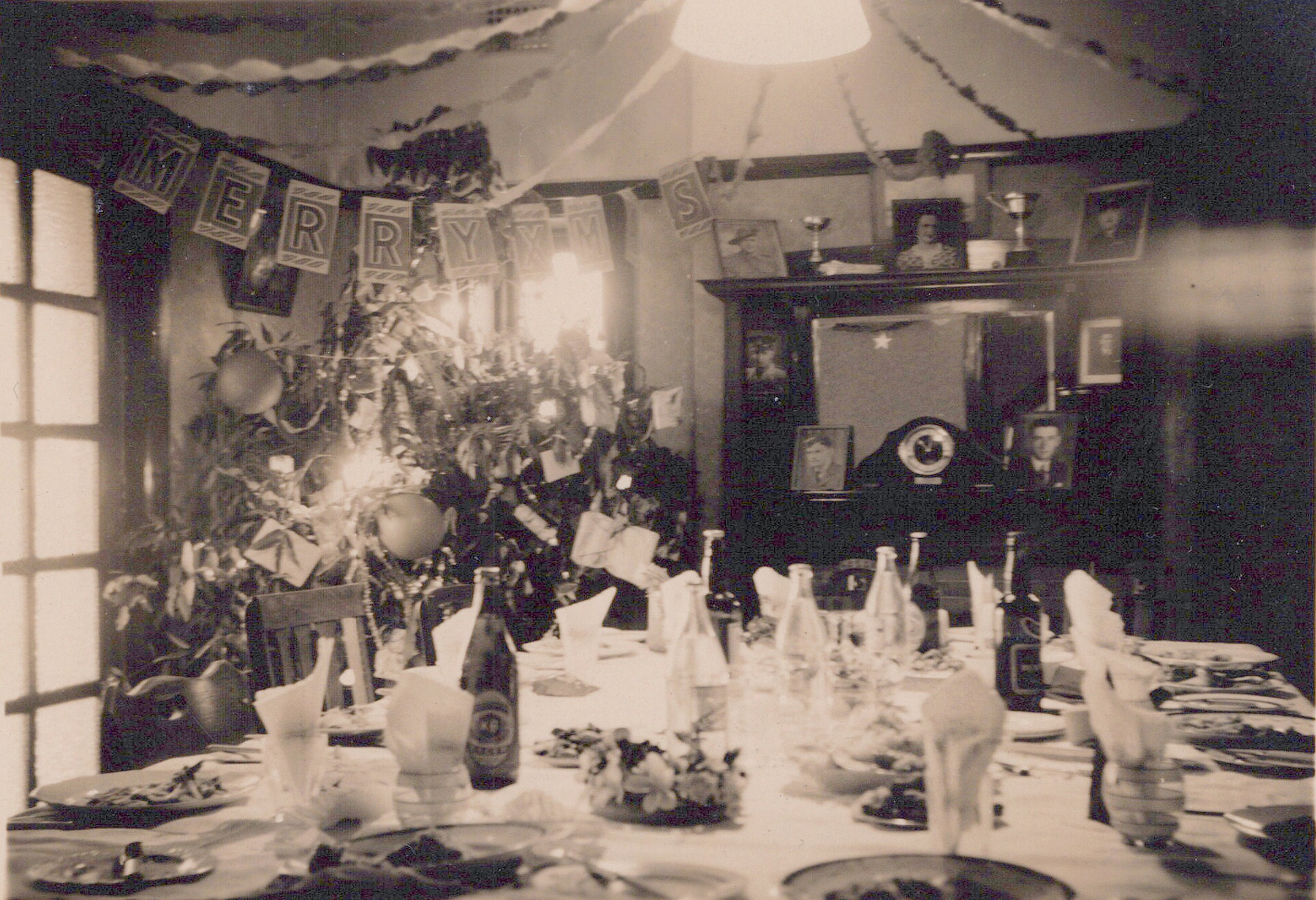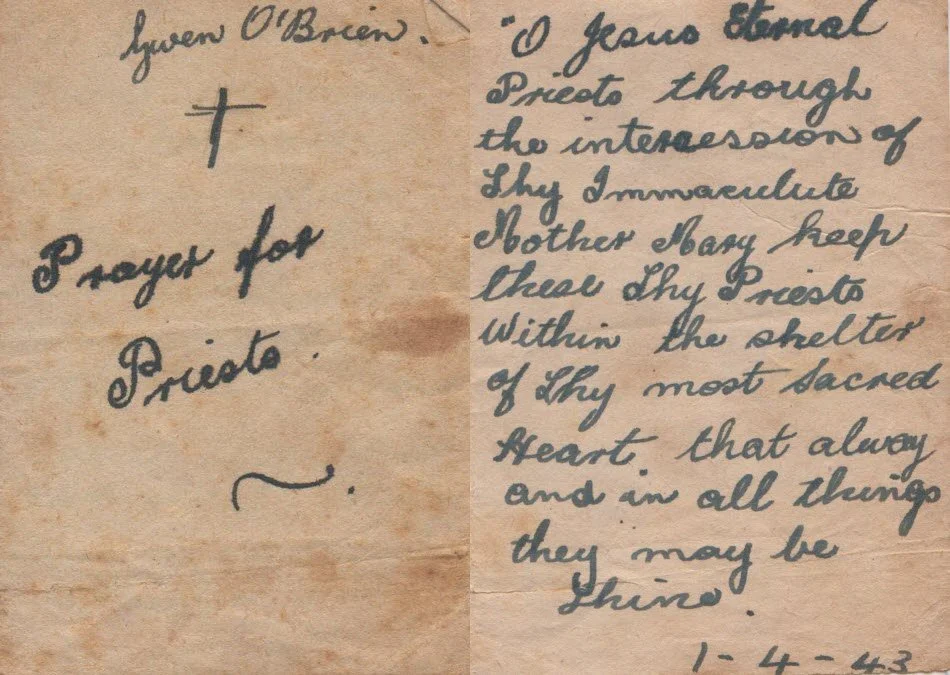Part 2 - Move to Sydney and the War years (1941 to 1945)
So, when and why did the family move from Cooberang at Junee Reefs to Sydney? My cousin Madonna sums it up on page 98 of the second edition her book ‘Growing Up On Cooberang’.
Madonna’s Family Book
In 1941 William and Irene O'Brien sold Cooberang to Tom Heffernan (Walter's son), who grew up on Noorla, the property next door. From the outbreak of World War II, the future of running the property looked uncertain. Working the land became increasingly difficult as the O'Brien boys Jack, Alan, Harold and later Cyril enlisted in the Air Force or Army. Meeting the demands of ploughing, planting and harvesting meant that Irene and most often Helen started driving the tractor to help William with his duties. This situation did not please William, so it was decided that the family would move to Sydney.
Mum was 13 when that decision was made. In her video interviews with Kate, Mum remembered the move like this:
Dad moved especially for us girls. He knew we wouldn’t go on the land, and he wanted us to have the chance for education and a job. I remember travelling up to Sydney in Mum and Dad’s car with Mum, Allan and Dad in the front, and me in the back with Anne on one knee and Claire on the other. All we owned was packed and stacked, and in and on that car, all around us. I don’t know how we did it! I don’t know what happened to the furniture we had in the old house. Maybe it was just left for the next people.
We stayed with Dad’s sister in Marrickville when we first moved to Sydney. It was an immaculate home and the first time we had electric lights! We jumped up on the bed to pull the cord on and off, on and off! Aunty had a fridge that was just framework, covered in canvas, with water constantly dripping on it, to keep it moist. We had to always salt our meat for freshness.
1940s pull on/off electric lights
When Kate recorded Mum’s reminiscences, Mum recalled that the family moved from her Aunty’s place:
…to Grasmere Street in Cremorne, where Mum and Dad had a shop – a corner store.
But the corner store was actually in Pine Street in Cammeray. Whatever the case, Mum recalled that in the shop, she and her siblings would:
…run down the stairs grabbing lollies from the big containers at the bottom of the stairs, trying not to get caught by Mum”.
I had to go to Monte Sant’ Angelo College nearby as a boarder because Dad wanted to give us girls the same opportunities, and the older girls had boarded in Wagga. I hated it – shy gawky country girl in a wrong uniform. I ran all the way down the back the first day and a head girl had to come and look for me. Once Patsy Kelly arrived, the next week, I was right. She was just like me – a shy country girl. Country then was Gosford!
Patsy and Gwen - ‘best buddies’ at Monte
It’s funny to think of your parents being at school. Rob’s earliest memories of Mum and Dad are when he was about 6 or 7, when Mum was 36 and Dad was 47. Since their deaths we’ve found lots of pictures of both of them when they were children and into their teens, but we never really looked at these much while they were alive. And we don’t remember them talking much about their school days with us, aside from the odd story here and there. Although, Dad did delight in telling us that he scored 7% in Latin at High School, which was apparently why he never went on to become an ancient Roman.
Of course, the O’Brien family had arrived in Sydney during World War II. And it wasn’t long before four of Mum’s six brothers had volunteered, along with one of her sisters.
In fact, Jack had joined the Air Force on 16 January 1939, before the family had moved from Cooberang to Sydney, and 8 months before the war started. Jack was 20 years old.
·Harold joined the Army on 18 June 1940, aged 19.
Allan joined the Air Force on 6 December 1941, aged 22.
Cyril joined the Air Force on 13 October 1942, aged 19.
Helen Joined the Army on 12 January 1943, aged 18.
Mum recalled that while she was a boarder at Monte Sant’ Angelo during WWII,
…we had to have blackout curtains on the windows so the bombers couldn’t see a light if they flew over…
a fact that’s confirmed in the 1995 Monte Sant’ Angelo magazine, where there was an article looking back across the 50 years since the end of WWII. Rob has transcribed that article below. You’ll also see that it includes a quote from Mum’s school friend Patsy Kelly, who would later become Patsy Rogerson, and who remained a close friend of Mum’s throughout their lives.
Patsy and Gwen - Still fast friends
On August 15 this year Australia will commemorate the 50th anniversary of the end of World War ll. It is an anniversary when we remember the men and women who struggled through the dark years between 1939 and 1945 and left us a legacy of 50 years of relative peace.
It is a time for us to remember those members of the Monte community who were involved directly or indirectly in the War effort. Many Monte ex-students served both here and overseas, others were among the women in Australia who, in 1940 when 'man-power' grew short kept the home front running by taking over men's jobs in the factories and on the land.
For the students who spent the war years at Monte, life continued its same routine until the bombing of Pearl Harbour in 1941. At this time several Sydney schools moved their students to safer areas in the country, but Monte remained in Sydney as it had many day girls who needed a school. Enrolments fell however, and in 1943 only 8 girls sat for the Leaving Certificate. There were a few bad moments when the decision to stay must have been questioned, particularly when the news of the Japanese submarines in the harbour reached the college or when warning was given of a possible air-raid.
Lesson times were often disrupted by air-raid drill and the girls were soon able to evacuate the whole school in three minutes!
Patsy Rogerson (Kelly) remembers the fearful sounds of the air raid sirens and the 'big girls' each taking a small girl to the shelter - then the relief felt when the 'all clear' sounded.
Walls were protected by sandbags and the windows were taped to stop shattering and covered with black paper to prevent lights being seen. The 'blackout' at night meant that homework was often not finished, there was a shortage of paper and books were difficult to obtain. Rationing of food, petrol, clothes etc was a big restraint - even the traditional pleated tunic was reduced to a plain straight up-&-down one.
This is a picture of the Senior School from 1943 when those precautions were being taken at Monte. Mum’s second from the left in the second back row. You can see the blacked-out windows behind the girls.
Monte - 1943
That same year, Bill and Irene sold the shop at Pine Street and moved to their new home in Cremorne. Since the Japanese bombing at Pearl Harbour in 1941, there was a heightened sense of potential danger, particularly along Sydney’s coast and harbour suburbs. Then the city’s worst fears came to pass when Japanese submarines breached a wartime defence boom that spanned the harbour, landing bombs at Bondi, Rose Bay and Woollahra.
After that, Sydneysiders were wary of living too close to the ocean or the harbour, and Mum always said that it was because of those fears that the family could afford to buy the house In Earle Street, Cremorne - it was just 1km from the harbour at Primrose Park.
We’ve heard that, when things are going particularly badly with the kids, some parents secretly dream of moving house and not telling their offspring. Well, turns out that may have happened to Mum.
Mum and Dad moved from Pine Street to Earle Street one day but forgot to tell me the address so when I came home from boarding school for the weekend to do my washing, I found the old house empty. I was wandering around the streets and only found them when I saw Anne and Claire’s coats hanging over the verandah! We all got married from that home.
The war took a sad and very personal toll on the O’Brien family in February of the following year, as Mum recalls below:
When I was about 15 Reverend Mother called me to come and take a phone call. That never happened and I was so scared as I went to answer it. Mum was on the phone and told me to come home as my brother [Allan] had been killed in the war. I didn’t know what to do. I caught a tram home, got off at The Oaks Hotel and walked up and down outside the house. I didn’t want to go inside. I was so scared Mum would be crying. I had to go back to school after this and I just ran and ran right down the back of the property, on the boundary. I was so sick, like my stomach was twisted up. I just couldn’t comprehend Allan being dead and I didn’t know what to do. I couldn’t bear to see Mum upset. I had to grow up a bit at that time.
I found out a long time later that Celia had been the one to see the telegram first when they came to Mum’s house, and she told Mum Allan had been wounded. I know it was just to ease the pain but likely it was worse for Mum and Dad when they found out he’d actually died. Everyone has their way of coping with death.
There would have been a lot of growing up during that period. Mum was just 11 when WWII broke out. She then made the move from country NSW to Sydney, which although nowhere as big as it is now, would have been a massive change. Monte, the school where she boarded, was HUGE compared to what she’d been used to. And not only that, but she was away from her family as a boarder. Then she saw five of her siblings leave to join the forces, with one of them never to return. And all of this while living through six years of war and growing from a country child to a young woman. It’s hard to imagine.
Mum was always one for the underdog, and although she was very shy during her days at Monte, she wouldn’t stand for injustice, and would always speak up. On the family video Rob did for the Cousins’ Reunion back in 2001, she tells the story of when one of the teachers at Monte picked on Anne, who was also a student there - click here fore more.
In her video recollections with Kate, Mum also told this story.
Once I was at North Sydney railway station and there was Patsy Kelly’s brother, who had been in the forces, collapsed on the platform. Someone was making fun of him, saying he’d collapsed drunk. I was only young but had to speak up saying he wasn’t drunk, that he was ill from the time fighting in the war. I think he had malaria. I was so mad. I can’t stand people making fun of others when they don’t know their story.
We imagine Mum’s strong sense of right and wrong had been instilled in her by Irene and Bill, as well as through the family’s deep faith, and we’re sure that faith helped Mum and her family cope with Allan’s death.
When Mum was 15, she took two small pieces of cardboard, folded them, and wrote a prayer on each of them. She no doubt carried these with her at school.
Prayer for Generosity
Dear Jesus, teach me to be generous,
Teach me to serve Thee as Thou deserves;
To give, and not to count the cost,
To fight and not to heed the wounds,
To toil and not to seek for rest,
To labour and to look for no reward
Save that of feeling that I do Thy Holy Will. Amen.
Gwen O’Brien – 2nd Year – 1943
Prayer for Priests
O, Jesus Eternal Priest
Through the intercession of Thy Immaculate Mother Mary
Keep Thy Priests within the shelter of Thy most Sacred Heart
That always and in all things
They may be Thine.
Gwen O’Brien – 1 April 1943
We also discovered this Holy card and note that was given to Mum by her older sister Joan on 29 October 1944. Joan tells her sister that the card is ‘in remembrance of your consecration as a Child of Mary”, and she calls on Mary to always guide Mum.
Holy Card from Joan to Gwen
Rob wasn’t familiar with the consecration as a Child of Mary, so he did some research. It seems that it’s usually carried out when the person is a young child, so perhaps this was the anniversary of when this was done for Mum. The purpose of the consecration is to place the child under Our Lady’s care, so that she can better fulfil her task of transforming the child into an image of her Son, Jesus Christ.
Of course, religion was a major part of the school life at Monte, particularly for the boarders. Mum often spoke of her time at Monte, and the fact that she wasn’t much of a scholar. In her recollections with Kate, she said: “Somehow Patsy and I got through school. I’d never been clever like the boys.” Amongst her documents, we never found any reports on her performance as a student, although oddly, we did find just one award certificate, which was for music.
Gwen’s music award aged 15
As a kid, we can’t remember Mum’s musical talents that much. Baking cakes and biscuits…yes, that we can clearly remember. But as far as music, Mum pretty much left that to Dad on the piano. And she always said that Claire had been given the gift of a fabulous singing voice.
And yet the only academic award we could find was for reaching Grade III in music theory in 1944, when Mum was 16. At first when Rob read the grade, he thought it was 111, as in a hundred and eleven, and he thought, “Wow…Mum must have worked bloody hard to work through all those levels”, but then it dawned on him that it was probably for grade 3. And he’s supposed to be the educated one!
And so, as we head into 1945, we see Mum’s time at Monte coming to an end. She packed up her Grade 3 music certificate and headed off into the next chapter of her life.
To go to the next section of Gwen’s story click here.
To be re-directed to any other part of Gwen’s story, click on the applicable blue text below.
Part 1 -The Cooberang years (1928 to 1941)
Part 2 - Move to Sydney and the War years (1941 to 1945)
Part 3- First jobs, meeting Alf and religious differences (1945 to 1951)
Part 4 - Marriage and children (1951 to 1965)
Part 5 - Taking control and drifting apart (1965 to 1991)
Part 6 - Life after Dad (1991 to 2011)
Part 7 - The Alzheimer years (2011 to 2020)












